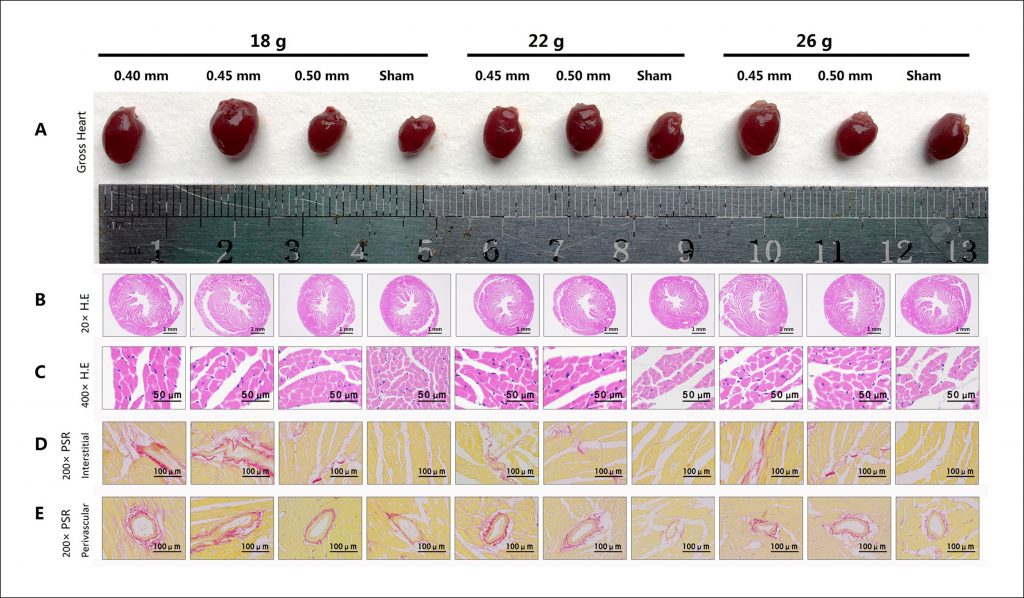Arq. Bras. Cardiol. 2018; 110(6): 568-576
Pressure Overload-induced Cardiac Hypertrophy Varies According to Different Ligation Needle Sizes and Body Weights in Mice
DOI: 10.5935/abc.20180088
Abstract
Background:
The cardiac hypertrophy (CH) model for mice has been widely used, thereby providing an effective research foundation for CH exploration.
Objective:
To research the effects of CH modeling under abdominal aortic constriction (AAC) using different needles and weights in mice.
Methods:
Four needles with different external diameters (0.35, 0.40, 0.45, and 0.50 mm) were used for AAC. 150 male C57BL/6 mice were selected according to body weight (BW) and divided into 3 weight levels: 18 g, 22 g, and 26 g (n = 50 in each group). All weight levels were divided into 5 groups: a sham group (n = 10) and 4 AAC groups using 4 ligation intensities (n = 10 per group). After surgery, survival rates were recorded, echocardiography was performed, hearts were dissected and used for histological detection, and data were statistically analyzed, P < 0.05 was considered statistically significant.
Results:
All mice died in the following AAC groups: 18g/0.35 mm, 22 g/0.35 mm, 26 g/0.35 mm, 22 g/0.40 mm, and 26 g/0.40 mm. All mice with AAC, those ligated with a 0.50-mm needle, and those that underwent sham operation survived. Different death rates occurred in the following AAC groups: 18 g/0.40 mm, 18 g/0.45 mm, 18 g/0.50 mm, 22 g/45 mm, 22 g/0.50 mm, 26 g/0.45 mm, and 26 g/0.50 mm. The heart weight/body weight ratios (5.39 ± 0.85, 6.41 ± 0.68, 4.67 ± 0.37, 5.22 ± 0.42, 4.23 ± 0.28, 5.41 ± 0.14, and 4.02 ± 0.13) were significantly increased compared with those of the sham groups for mice with the same weight levels.
Conclusion:
A 0.45-mm needle led to more obvious CH than did 0.40-mm and 0.50-mm needles and caused extraordinary CH in 18-g mice.
Keywords: Body Weight; Cardiomegaly; Heart failure; Needles/utilization; Rats
518

